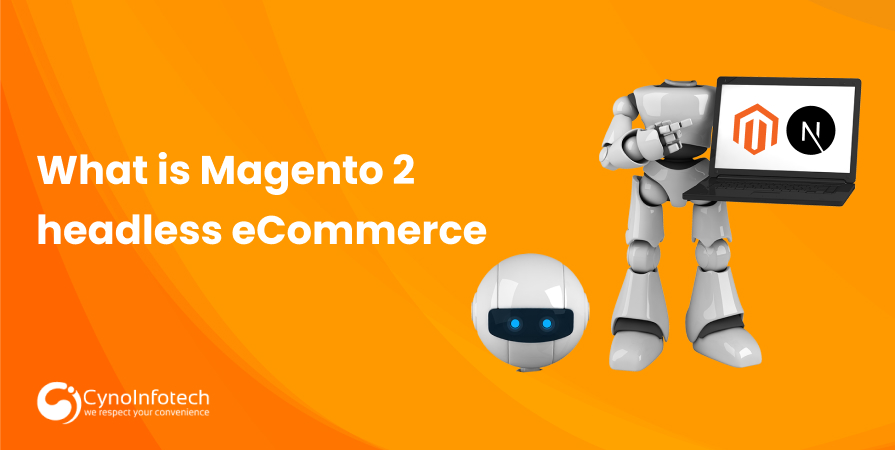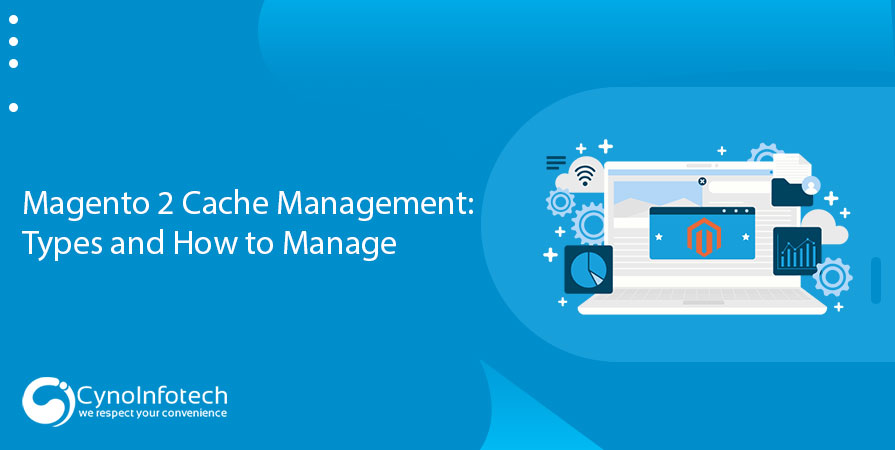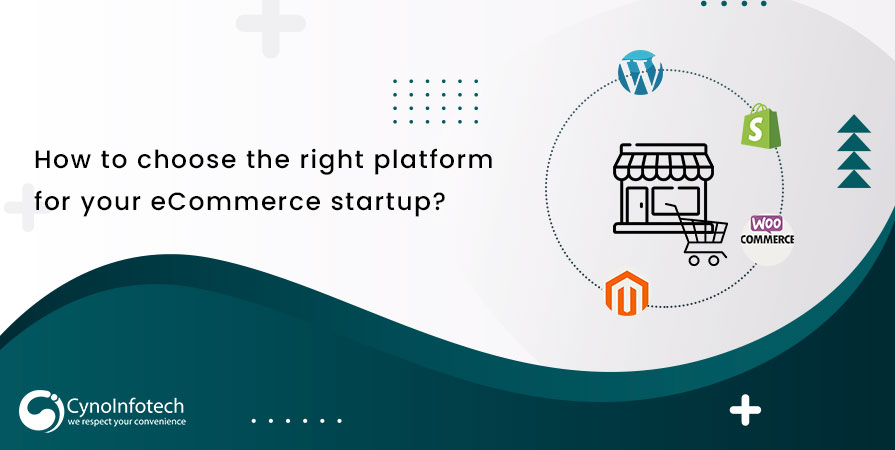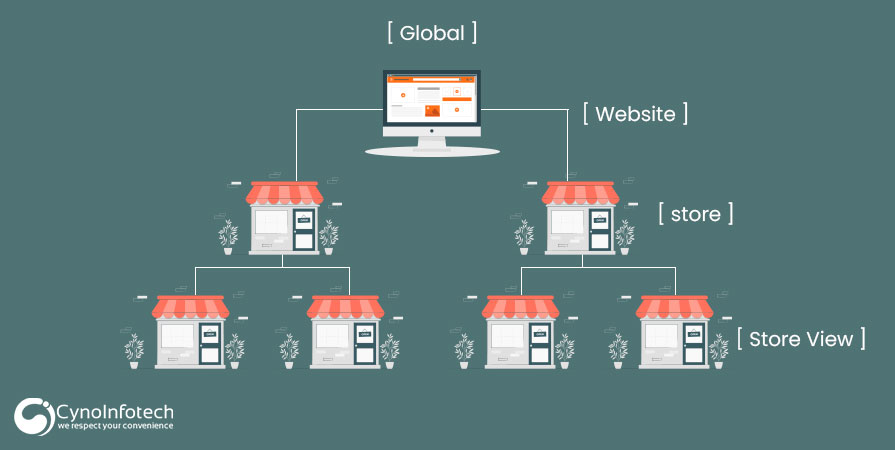With Magento 2 headless commerce, there was an interesting shift in how e-commerce platforms are built and implemented.
This approach disentangles the true head layer of Magento 2 from the back-end processes, while providing a completely modular environment that is both capable for large-scale businesses seeking to render exceptional internet buying experiences and replete with customization possibilities for meeting those needs.
Introduced in 2015, Magento 2 headless commerce is one of the most transformative trends in e-commerce, offering boundless opportunities to create inventive solutions with advanced functionality and interconnected technology platforms.
Magento 2 Headless Commerce: Make It Easy to Understand
In the conventional order in different e-commerce structures, there is a back-end procedure whereby the platforms of Magento 2 sorts the business management like product organization and payment management and the front-end process which comprises of interface, design and client interactions.
Thus, it binds applications closely together which at times can make it less flexible, particularly where there are trends toward higher variability in the application of digital experiences.
These limitations are eliminated in Magento 2 headless commerce by keeping most of the back-end processes in a high performing API while the front-end can be built from a fresh slate and may use the latest development frameworks including React, Vue. js, Angular, or others.
This disconnection enables fast innovation solutions on the user interface front while ensuring that the primary e-commerce processes enshrined by Magento 2 are not compromised.
Advantages of Magento 2 Headless Commerce
- Flexibility and Customization
Since the back-end of a business is based on Magento 2, the business owners and the developers can select the most appropriate technologies and frameworks for front-end development required for their business.
This allows for the creation of custom, highly-specific solutions that can incorporate strict branding and user experience requirements as well as follow market trends. - Enhanced Performance
Implementing the headless architecture means that, even when each layer is separately optimized, the result is better site performance and speed.
Some of the graphical elements, including graphics and images, can be pre-rendered separately and cached, while the actual data manipulation and other computation-intensive tasks reside within the Magento 2 framework. - Scalability
The integration of the headless approach also mitigates communication scalability where the front-end and back-end elements can scale themselves based on the traffic pattern and growth needs. This scalability helps to make sure that the platform responses to the increased traffic during the busy times. - Improved User Experience
Application of front-end frameworks helps in developing modern and engaging shopping experiences with enhanced interactivity and personalization. Through the continued development of rich client-side interaction, businesses are well placed to make use of targeted customer interactions to influence the buying process. - Integration Capabilities
Some of the vital features and functionalities regarding the connectivity and integration with third-party services include the following: This integration capability can assist enterprise to align matrix channel plans and aims at web, mobile, social, and other points of contact.
Magento 2 Headless Architecture
The concept of headless Magento 2 commerce implies that the platform exposes core e-commerce capabilities of Magento through an API which in turn serves as a hub of the headless application.
These APIs act as a link between Magento2 system and front-end web application discussed above to facilitate real time data transfer.
Front-end developers use Magento 2 APIs to retrieve products and their details, load content on the storefront as and when needed, handle a shopping cart and sale transactions. This approach allows keeping the user interface responsive, scalable, and leverage on the Magento 2 platform enterprise-level features for efficient handling on complex e-commerce processes.
Implementing Magento 2 headless commerce involves several key steps
- API Configuration
Determine what specific feature or capability needs to be exposed in the Magento 2 API and set up these endpoints in a secure manner. - Front-End Development
Select an appropriate front-end framework such as React, Vue. js, Angular or any other relevant framework and use the components in the front-end to work properly with the Magent 2 APIs. - Data Synchronization
Introduce procedures on how to entice structural consistency between the front-end and back-end systems while addressing issues relating to products, inventories, prices, and customers. - Testing and Optimization
Carry out integrative testing to confirm that the web application works, performs and meets user expectations on different devices and browsers. Balancing front-end and back-end solutions, adjust the interface and the development process as necessary in response to pilot testing. - Deployment and Monitoring
Introduce the headless commerce solution in the production environment and analyze its functioning and interaction with users and other systems based on the collected indicators. On a continuous basis, adaptations and improvements should be made based on factors such as analytics and user feed back.
Magento 2 headless example
Several businesses have successfully adopted Magento 2 headless commerce to enhance their digital presence and customer engagement:-
Fashion Retailer: Uses Magento 2 as the system on which product catalogs, orders, and payments are hosted and formed while using React for front end and making the shopping style more appealing.
Consumer Electronics Brand: It includes the integration of Magento 2 with Vue. js to rapidly develop an easily manageable and highly interactive online shop that, among other features, would allow for accurate product representation and immediate updates of stock status and smooth checkouts.
B2B Supplier: Selects Angular as the front-end technology to work with brands’ APIs and delivering a flexible and adaptable solution for Magento 2 that meets business clientele requirements.
Conclusion
Creating headless commerce with the help of Magento 2 means that businesses have a competitive edge in the present e-commerce market space. And as the architecture of the new version has a powerful back-end connected with a versatile front-end that can help to implement a great number of progressive front-end technologies.
By implementing headless architecture, organizations can create engaging digital experiences that enhance organizational performance, avoid technologically stagnated e-commerce platforms, and remain relevant to the evolving market.
To find out more about implementing Magento 2 headless commerce and learning about its advantages, reach out to Cynoinfotech for professional solutions!







Leave a Reply